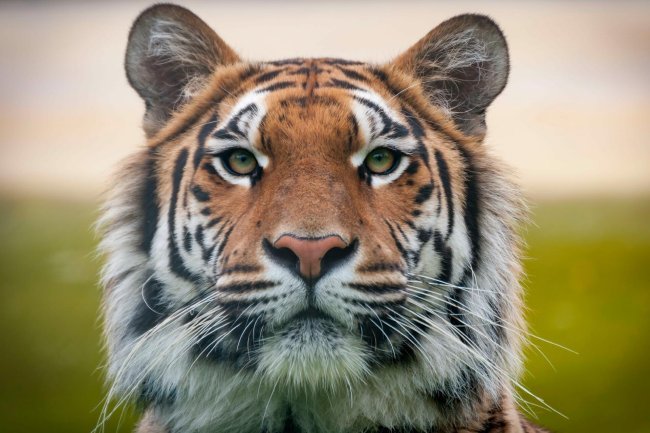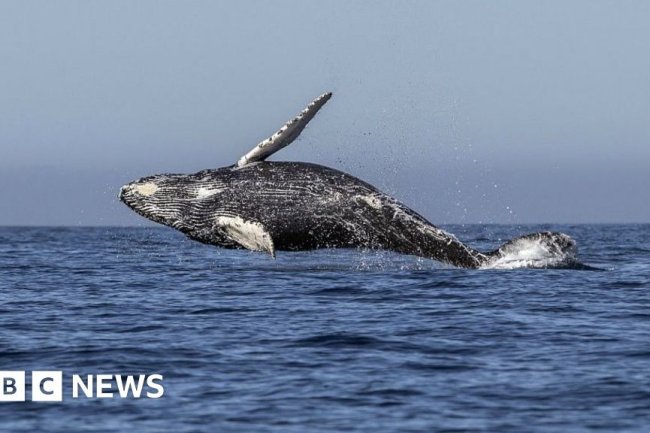Looked Like a Chinchilla and Weighed Only a Pound: 65 Million-Year-Old Cow Relative
After the nonavian dinosaurs were extinct, a mammal called Militocodon lydae—which resembled a chinchilla but is more closely related to cows—ran over what is now Colorado.

65 Million-Year-Old Cow Relative Looked Like a Chinchilla and Weighed Only a Pound
Militocodon lydae, a mammal that resembled a chinchilla but is more closely related to cows, lived in what is now Colorado after nonavian dinosaurs went extinct.
An illustration shows a furry four-legged creature with its head and front legs sticking out of a pile of leaves. It is brown and white with whiskers.
An artist's reconstruction of Militocodon lydae. (Image credit: Denver Museum of Nature & Science)
Researchers in Colorado have found the fossilized skull of a tiny, now-extinct mammal that lived about 65 million years ago, after the asteroid strike that killed the dinosaurs.
The newly identified species, Militocodon lydae, was the size of a chinchilla and weighed up to 1 pound (455 grams). It belonged to a group that likely evolved into modern hoofed animals like cows, deer, and pigs.
M. lydae helps scientists understand how mammals diversified after the nonavian dinosaurs vanished during the Cretaceous-Paleogene (K-Pg) mass extinction 66 million years ago.
Related Stories
- Like 'walking through the woods of millions of years ago': Ancient ecosystem brimming with dinosaur tracks discovered in Alaska
- Triassic 'tank' unearthed in Texas was a croc cousin that lived 215 million years ago
"Rocks from this time period have a very poor fossil record, and finding a fossil mammal skull is a significant step in documenting the early diversification of mammals after Earth's last mass extinction," Tyler Lyson, curator of vertebrate paleontology at the Denver Museum of Nature and Science, said in a statement.
Lyson and his team published their findings in a study on April 30 in the Journal of Mammalian Evolution.
Related: Final moments of dinosaur and mammal's epic 'mortal combat' battle preserved by volcanic eruption
M. lydae lived about 65.43 million years ago, during the Paleocene epoch (66 million to 56 million years ago), around 610,000 years after the mass extinction at the end of the Cretaceous period.
The team identified M. lydae from skull and jaw fossils found in the Corral Bluffs area near Colorado Springs in 2016 and 2020. The genus name, Militocodon, honors museum volunteer and retired teacher Sharon Milito, who found the first specimen in 2016. The species name, "lydae," honors investor and philanthropist Lyda Hill, who supports the museum's post-K-Pg recovery research. An illustration of two furry creatures in a pile of leaves in the forest.
An artist's reconstruction of Militocodon lydae.
Related Stories
- Low water levels in Lake Powell reveal 'extremely rare' fossils from extinct Jurassic mammal relative
- Mammals lived alongside some of the earliest dinosaurs, controversial study claims
- Temperature inside Chicxulub crater after dinosaur-killing asteroid hit revealed with 'paleothermometer'
The team used high-resolution X-rays to make 3D reconstructions of the fossils. M. lydae belongs to the Periptychidae family, and its teeth are similar to other periptychids, according to the study.
Researchers still have much to learn about periptychids and other Paleocene mammals. However, M. lydae seems to be an intermediate form between some of the early members of the group.
The teeth of M. lydae fit evolutionarily between the older Mimatuta genus and the newer Oxyacodon genus. The researchers showed this in the study by comparing diagrams of a tooth from each genus.
What's Your Reaction?






















